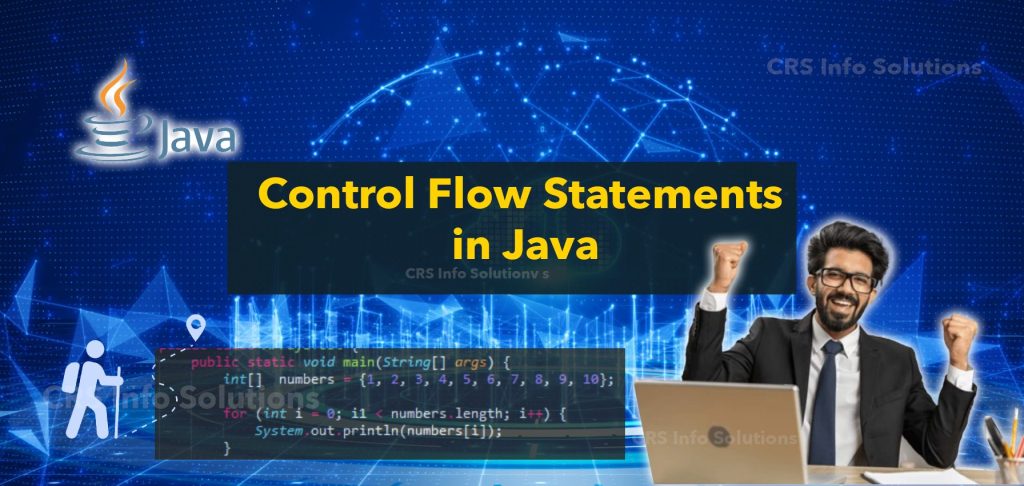
Control Flow Statements in Java

Hey there, coding friends! In our journey through Java, we’ve encountered the fundamentals like variables and data types. Now, it’s time to take a step further and explore how we can make our programs make decisions and follow different paths – this is where Java’s control flow statements come into play.
I remember how these concepts seemed daunting at first, but once you get the hang of it, it’s like directing traffic on a busy intersection, ensuring everything moves smoothly and efficiently.
Enhance your Java skills with our experienced trainers who are ready to guide you into becoming a seasoned Java professional with our Java training. Dive into hands-on, real-time projects that prepare you for real-world programming challenges. Enroll for a free demo today and start your journey towards Java expertise!
What are Control Flow Statements?
Control flow statements are the backbone of decision making in Java. They allow our program to choose different paths of execution based on certain conditions – it’s like choosing between different roads while driving, depending on traffic or your destination. The primary control flow statements in Java are if, else, switch, while, do while, and for. Let’s dive into each one with simple examples.
The if Statement:
The if statement is the most straightforward control flow mechanism. It evaluates a boolean expression, and if the expression is true, it executes a block of code.
int number = 10;
if (number > 5) {
System.out.println("The number is greater than 5.");
}In this example, if number is indeed greater than 5, the message will be printed.
The if-else Ladder:
Sometimes, we need to check multiple conditions. That’s where the if-else ladder comes in handy.
int score = 75;
if (score >= 90) {
System.out.println("Excellent!");
} else if (score >= 70) {
System.out.println("Good job!");
} else {
System.out.println("Keep trying!");
}
Here, the program prints different messages based on the value of score.
The switch Statement:
The switch statement allows you to choose from multiple blocks of code to be executed based on a certain variable’s value. It’s like selecting a menu item in a restaurant.
int day = 4;
switch (day) {
case 1:
System.out.println("Monday");
break;
case 2:
System.out.println("Tuesday");
break;
case 3:
System.out.println("Wednesday");
break;
case 4:
System.out.println("Thursday");
break;
case 5:
System.out.println("Friday");
break;
case 6:
System.out.println("Saturday");
break;
case 7:
System.out.println("Sunday");
break;
default:
System.out.println("Invalid day");
}
In this snippet, the program prints “Thursday” because day is 4.
Loops (while, do while, for):
Loops are used when we want to execute a block of code multiple times. For instance, printing numbers from 1 to 5 can be easily done with a loop.
for (int i = 1; i <= 5; i++) {
System.out.println(i);
}
This for loop prints numbers from 1 to 5.
Conclusion:
Control flow statements are like the steering wheel of our Java vehicle, guiding the program along various paths based on conditions and choices. Understanding if, else, switch, and loop structures like while, do while, and for is crucial in your journey of mastering Java. Just like in life, every decision you make leads you down a different path – in Java, control flow statements enable your program to make these decisions.
So, grab your Java IDE and start experimenting with these structures. Remember, the best way to learn is by doing. Keep coding, and enjoy the journey!
Read Previous Chapter and next chapter
Related Links:
- Scenario Based Java Interview Questions
- Accenture Java Interview Questions and Answers
- TCS Java Interview Questions
- Java Interview Questions for Freshers Part 1
- List Class in Salesforce Apex
- Design Patterns in Java
- Java and Cloud Integration
- What are Switch Statements in Java?
- Java Projects with Real-World Applications
- My Encounter with Java Exception Handling
- Java Development Tools
- Java Arrays
- Object-Oriented Programming Java
- Java Control Statements
- My First Steps in Java Programming
- Control Flow Statements in Java

